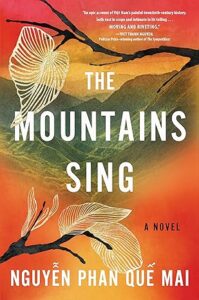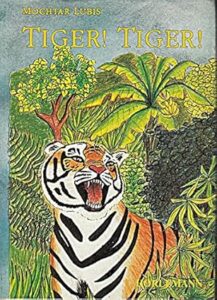It is just enough to google for theme in google and feel more perplexed if you weren’t before! Each author defines theme differently; For an abstract and vast subject, like theme, this enormous variation is understandable.
Set the definitions aside, the descriptions of the theme’s importance vary: some say if the plot is the skeleton of the story and the Character Arc is heart, then theme is the story’s soul. Some authors redefine the anatomy of the story and give the privilege of being the beating organ to the theme and designate the Character Arc to be the soul! No matter which description, all agree that theme is one of the most important elements of a story.
Should we, authors and writers, care about the theme of our manuscript(s), or is theme just a literary concept, to be discussed in literature departments? For a while, I believed in the second one. Until I read somewhere that theme rivets plot and the Character Arc and coheres the story segments.
If correct, how to weave themes into my manuscripts? Answering this question was the subject of my newest research and the result is the subject of this blog post.
What is the theme?
In a nutshell, the theme is what the story is about. When you want to tell a friend about a book or a movie you loved—without knowing—you speak about the theme; the movie was about a boy who wanted to avoid war, a girl who discovers she is a magician and wants to stop the devil, about a mother sicks her child, about a woman dislikes her situation…
Frequent theme topics are:
- Power
- Family
- Identity
- Loneliness
- Friendship
- Free will vs. Fate
- Hope
- Love
- Justice
- War & Peace
- Childhood
- Good vs. evil
- Coming of Age
- Environment/ climate change
A story may have more than one theme. Actually, a brilliant book that millions of readers, around the globe, resonate with it has more than one theme. Think of the Harry Potter series; Family, friendship, power, identity, death are the themes I can name instantly.
Recognizing the theme of a book or a film is straightforward. In crafting a story, you can easily distinguish it. However, what matters is the Thematic Statement or Thematic Message, not the theme!
Thematic Statement
Before we proceed further, it is important to mention that Thematic Statement has nothing to do with a preachy speech—it becomes more clear soon.
The thematic statement is a simple, powerful message an author is trying to convey in their work. While the theme is universal, the thematic statement is a personal worldview, like the fingerprint of the writer. It is part of the writer’s voice, raising from her life experience, character, and worldview.
For example, everyone in this world believes in love (theme = love). However, some believe love is a purchasable item. Thus, rich people are the most beloved ones. Whereas for some others true love is unconditional and unpurchasable. Countless books share “love” as their theme. Their differences lay in their thematic statements.
The thematic statement is far more significant than presenting the writer’s voice. Robert Mckee in his famous book, Story, calls the thematic statement the “central” or controlling story idea, the idea that guides you in writing your entire novel.
For example, the thematic statement of the Harry Potter series is Love and friendship triumph over evil. Looking back at that story, you see how this invisible thread is present in every single event from beginning to the end! You cannot find any single event unrelenting to this thematic statement. This example brings us to understand the importance of knowing your thematic statement.
It doesn’t matter if a scene has a special place in your heart, or it is a fast-paced scene to hook the reader, or adds an emotional depth to the story. Any scene, event, or detail, unalignable with the thematic statement, should go! Therefore theme is called the cohesiveness factor!
The thematic statement is the lighthouse in your story’s sea! Especially when you have got less than 1000 words to tell the story in your picture book manuscript!
My next question on my research journey was how to weave the thematic statement into the manuscript?
Weave the thematic statement in the story.
The theme is supposed to rivet Character Arc and Plot. Fantastic but, how to do it?
All blog posts stay on the theoretical level. Even reading Writing Your Story’s Theme by K.M. Weiland didn’t give me the practical approach I needed—it is a great book and I recommend you read it. 
I found an answer in a Youtube video made by Abbie Emmons in which she shares her method. Her method consists of five steps (listed below) and, in my opinion, it works! I wrote the steps on paper and examined my manuscripts against it and found many flaws!
1- Why does your story matter to you? What is the truth that you want to scream from the rooftops?
For example, you believe that human is valuable, no matter what. Remember, this theme is your personal truth. Million people are out there, believing race and skin color make them superior to others. You write a story because you want to share your opinion with others.
This question would specifically matter to your manuscript if you want to write a picture book biography. I read it once in a blog which unfortunately I didn’t bookmark it and cannot refer to it now. The blog’s author suggested pondering—before drafting—and answering this question “Why do I admire this person?” A reason should lay somewhere, in your subconscious possibly, that why did you select this person to write a biography about? The character’s courage? Persistence? underdog-ness? standing tall in any circumstance? It matters to find the theme and then create the entire story around it. Otherwise, the biography manuscript will be merely some chopped portions of Wikipedia texts! Not a story.
Now, let’s create two Thematic Statement examples and go through the steps:
Example 1: Humans are invaluable, no matter what.
Example 2: Consumerism doesn’t bring happiness.
Next comes the interesting step.
2- Flip the Truth on its head and make it a lie. This is your Protagonist’s misbelief.
At first, this step sounded odd. You want to tell your truth, not propagating a misbelief—in your opinion. However, this misbelief is exactly what your Protagonist needs to either grow out of it (Positive Arc) or get drowned into it (Negative Arc). This is the way to avoid a preachy story. The story shows the Protagonist’s change and the thematic statement is subconsciously conveyed to the reader.
This step is exactly where the theme’s and the Character Arc’s crossroads join.
So, we need to build Protagonist(s) who believe in a misbelief.
Example 1: we need a Protagonist who does NOT believe in her value as a human for some reason. Let’s say she dislikes her skin color. Thus, the misbelief of the Protagonist is ‘your skin color determines your value‘.
Example 2: We need a Protagonist whose misbelief is, owning more toys is happiness. So, she wants lots of toys for birthday gifts.
3- Find the origin of the misbelief, digging into your Protagonist’s past
This step is needed to create the backstory of the Protagonist. An event (or some events) should have had occurred in the Protagonist’s life which made her carry a misbelief through her life. However, this part is not so relevant to picture books for two reasons. First, misbelieves and emotional wounds are from childhood and for an adult novel, it makes sense to build this element in the character’s childhood. But in picture books, we are right in childhood, and second, the length of picture books doesn’t give space for backstory.
4 – How does the Protagonist cement their misbelief as truth again and again?
First and foremost, here is the point you should SHOW the Protagonist’s misbelief to the readers. We cannot tell the reader directly: look, dear reader, this Protagonist has so and so misbelief because of such and such. We need to implicitly show the misbelief in the Protagonist’s behaviors and decisions, actions.
This step lays the stepping stones to bring the Protagonist to the conflict point; in which she vividly realizes her misbelief is not working or the reason for her suffering is in her own behavior.
Example 1: Our Protagonist tries ways to look different; uses her mother’s face powder, uses eraser, …
Example 2: The Protagonist writes a long wish-list for her birthday. All about herself.
5 – Tell the Truth, crafting your Protagonist’s aha-moment
The main part of the story happens during this step. We need an Inciting Event to show the Protagonist the otherwise. Followed by events that help the Protagonist grow out of her misbelief and find her new truth. Never a character should change overnight, similar to a human. This step fills Act II (or Middle) and Act III (or End) of the story. Until the story reaches the aha-moment.
Example 1: Failure is inevitable; the Protagonist cannot change her skin color—no wonder! Next, we need to find a way the Protagonist learns her color is lovely. What about a dream in which the girl learns her lesson? Does this story sound familiar? It is Sulwe (2019) by Lupita Nyong’o. 
Example 2: We need to pick an unexpected Inciting Event to show the Protagonist the otherwise; what about an unusual birthday gift? like a lemon tree from grandma? We could make a good Character Arc, moving from despising to becoming a tree-lover. If you are wondering which book it is, I took this example from When Grandma Gives You a Lemon Tree (2019) by Jamie L.B. Deenihan. 
I hope reading this blog post gives you some idea on implementing your thematic message deep in your manuscript. Looking forward to hearing from you.
I write blog posts about the craft of writing picture books regularly. The list of the previous posts is on the PictureBookPedia.





Thank you for this blog. I struggle with theme and your ideas are helpful.
Hi Nancy, I am delighted to hear this.
Fabulous post, Nakisa! You’ve provided a clear concise explanation with great examples and even video clip links! I think this is going to help many writers, including me! Well-done!!!!!
Thanks, my dear Vivan
This post was really helpful. Thank you!
Glad that it helps.
Enjoyed reading your post and your excellent examples. Thank you❤️